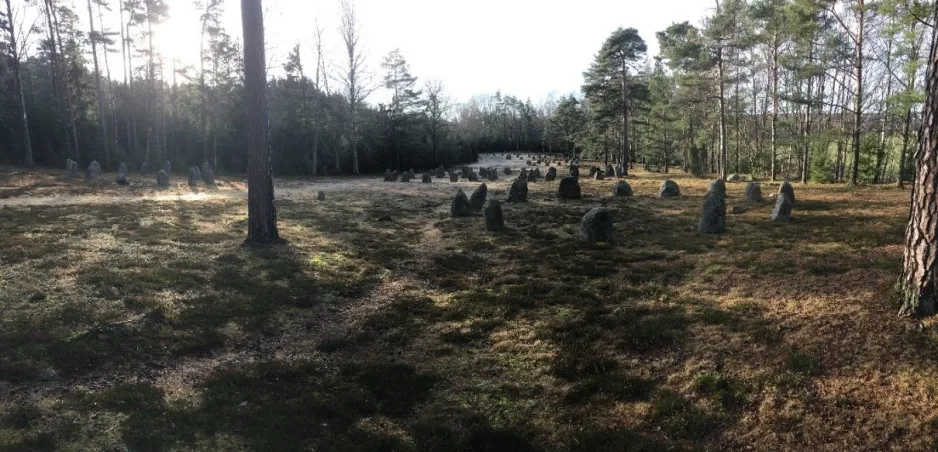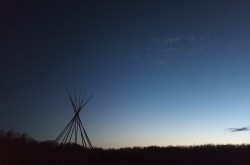Under the same sky: Conversations from the Indigenous Star Knowledge Project
June marks National Indigenous History Month in Canada. In the spirit of honouring our nation’s Indigenous communities, the Ingenium Channel presents a three-part series about the Indigenous Star Knowledge Project — a collaborative effort between Ingenium and its partners. In part one, Star stories: The making of the Indigenous Star Knowledge Project, guest writer Lindsey Kirby-McGregor shared the story of how the project was born. In part two, she summarizes the key conversations from a webinar hosted by the Indigenous Star Knowledge Project.
At the first webinar of the Indigenous Star Knowledge Project — held on Sept. 21, 2020 — the keynote and panel focused on the theme, “Protocols before knowledge.” Two keynote speakers, five panelists, and over 250 listeners from around the world connected over Zoom to participate in the webinar. Topics included the protocols and processes required to be able to engage with Indigenous star knowledge, using real examples from the experiences of each speaker.
Talking about Indigenous star knowledge quickly becomes a conversation about epistemology; the study of the stars from any perspective is inherently a science, and so comes a conversation about what it means to practice Indigenous science and where knowledge in this realm comes from. Guest speakers discussed the ways in which ceremony and protocol can be used to regenerate and protect Indigenous star knowledge, the ways in which star knowledge contributes to identity and self-concept, the ways we can use this to teach younger people about the stars and about themselves, and steps for moving forward with this knowledge.
Defining Indigenous star knowledge
While many attempt to draw similarities and differences between Indigenous and Western science and astronomy, speakers cautioned against trying to understand the systems comparatively. However, they described ways in which we can understand Indigenous science and astronomy and the impacts it may have on learning.
Dr. Shawn Wilson’s keynote address began by situating all science as just a “system for understanding.” Fundamentally, science is a system for getting to know things, and to Wilson, Western science is “a local system for getting to know things that went viral.” Wilson said, “We were the first scientists of this land and we still are scientists, engineers, artists. Indigenous people were able to use the stars to navigate across deserts and oceans.”
Dr. Nancy Maryboy, the president of the Indigenous Education Institute, said that the similarities between Indigenous and Western astronomy are easier to define than differences, as “we are all looking at the same sky.” And yet, she adds, “we are all wearing different glasses,” which are our filters or cultural ways of understanding the sky. Part of this means acknowledging where your knowledge is coming from and being given the permission to share it. According to Nancy, Indigenous astronomy reflects a sense of space and what you’re seeing above that particular land, and it needs to be spoken about only as tied to its context. It spans all of time and space, it has protocols, it is taught only in certain times of the year. It is about reciprocal relationships, responsibilities and stewardship, and it contains values. Knowledge comes from ancient star maps, songs, ceremonies, the community, and language — and from asking questions for the right reasons and in the right manner.
According to Dr. David Begay — who works with Nancy and holds a PhD with a focus on Indigenous Education and Application of Traditional knowledge — outside researchers come with preconceived questions that may limit their ability to relate to Indigenous knowledge. Where Western science categorizes things as animate and inanimate, Indigenous science sees everything as alive — a perspective now correlated with quantum physics.
Ultimately, panelists emphasized that Indigenous knowledge should be valued in its own right, not in terms of how it can be compared to Western science. For Anita Tenasco, Director of the Kitigan Zibi Education Sector, this means the stars and the Moon protected her community members while they camped outdoors — in protest against recreational moose hunting on their territory. While each speaker brought different perspectives, in every case the process of obtaining and understanding knowledge follows a vastly different set of protocols and processes than Western science; these begin with what is known as relational accountability.

Ancient tools and gathering places can provide protocol for regenerating Indigenous knowledge today.
Relational accountability
According to Wilson, reality is relational; we are not just in relationships, we are relationships, and they become the basis of who we are. And if everything is relational, then how do you build new knowledge?
The answer is simple, according to Wilson: by building a stronger relationship with it. In any scientific process, Wilson explained, one needs to build a relationship with something in order to know it better. How do you enter into relationships with sky country? According to Wilson, carefully. “How do I get to know things? Wilson asks. I hang out with them for a while – hang out with something for a while and it will tell you secrets”. In some cases, he says, those secrets are meant to be shared with others, and in others they are meant to be kept to yourself.
In the case of star knowledge, Wilson asked webinar listeners to reflect on how they might engage with the space between the stars. For him, that space is sacred: it is when you build stronger, closer relationships that you enter that sacred space. In order to do so, there is a tool that helps us intentionally create the space to build such relationships: ceremony.
Ceremony
There are two critical ways in which ceremony came into play in this discussion:
- Ceremony is the process that creates intentional connection with the sacred; and
- Ceremony is a requirement for hearing certain stories and knowledge.
After Wilson’s eloquent introduction to the topic, Stuart Barlo shared his journey of reconnecting with star knowledge and being able to speak about Sky Country. He reconnected with Elders in his community, and was brought through required ceremonies to be able to hear certain stories. These ceremonies, which included the use of a sacred Yuin Message stick, were not about interacting with star/sky knowledge, but simply to prepare Barlo to be able to interact with it; they were about intentionally positioning him to be in respectful relationship with sky country.
Later, Wilfred Buck reiterated that knowledge that was lost through colonization was gained through ceremony, including fasting, sweat lodges, Sundance, shaking tents, dreaming, singing, praying, and sharing with people. Since we never stopped doing these things, said Buck, we can still regain that “misplaced” knowledge, as “it’s out there, and we just have to find it.”

Stone circles in Norway: What are the protocols for entering and using ancient observatories/sacred circles?
Indigenous star knowledge and identity
Many of the event’s speakers related Indigenous star knowledge to identity, particularly for Indigenous youth. Stuart Barlo discussed working on a project targeting young people, particularly those who have been removed from their families, who have had no real contact with their communities and nation groups. In this project, elders take these young people out on the land and talk to them about the sky and who they are in relation to the whole earth; not just the country they’re living on, but the sky country that they can see and the country that they belong to. Barlo explained that this project is gaining support from people who understand the importance of identity:
“When you start to understand who we are in the scheme of things, it helps us stand proud. It helps our young people understand who they are and that they are a part of something that is really important and is really large, and we start to see an identity develop that they don’t have. There’s a contextual knowledge as they start to relate who they are, we look up and we see the sky above this country, and that tells us this place. It helps the young people to develop identity particularly as an Aboriginal person, but it helps them to become more human.”
~ Stuart Barlo
Nancy Maryboy emphasized that to learn Western astronomy, Indigenous youth need to know their own astronomy first; this gives them a platform to which they can build and add Western astronomy. Maryboy explained that only once she understood her own cultural astronomy and the concept of wholeness of Indigenous astronomy, was she able to begin understanding other astronomy concepts.
Wilfred Buck had the same experience in teaching First Nations youth across Manitoba; when you relate to their own culture it makes a difference. For youth, it is important to experience nature and look at the night sky. From there, Wilfred said:
“The question that’s asked is, ‘Where do I belong in this reality?’ And what they’re asking is, ‘Who am I?’ They’re looking for identity. And they want their own people’s identity to be attached to that, not a Roman mythological identity. Self-concept and self-identity is very important to them. The knowledge that their people hold is very important to their self-confidence.”
~ Wilfred Buck
The first webinar of the Indigenous Star Knowledge Project underscored that every culture has scientific knowledge. While some of it is shareable and some is to be kept within the community, that knowledge can be recovered by recovering the processes that lead to discovering it originally. For Indigenous star knowledge, this is ceremony, and approaching ceremony with the appropriate protocols.
According to Wilson, if you can get everyone in a room all thinking the same thing at the same time, a miracle will happen, and that miracle is enlightenment. Sometimes it’s as simple as saying, “Oh! I understand something about this a bit better.” Finally, while speaking an Indigenous language is integral to fully understanding Indigenous knowledge, finding common ground — translating to one another and communicating with each other — is a critical component of learning. After all, as panelists pointed out, we are all under the same sky.















